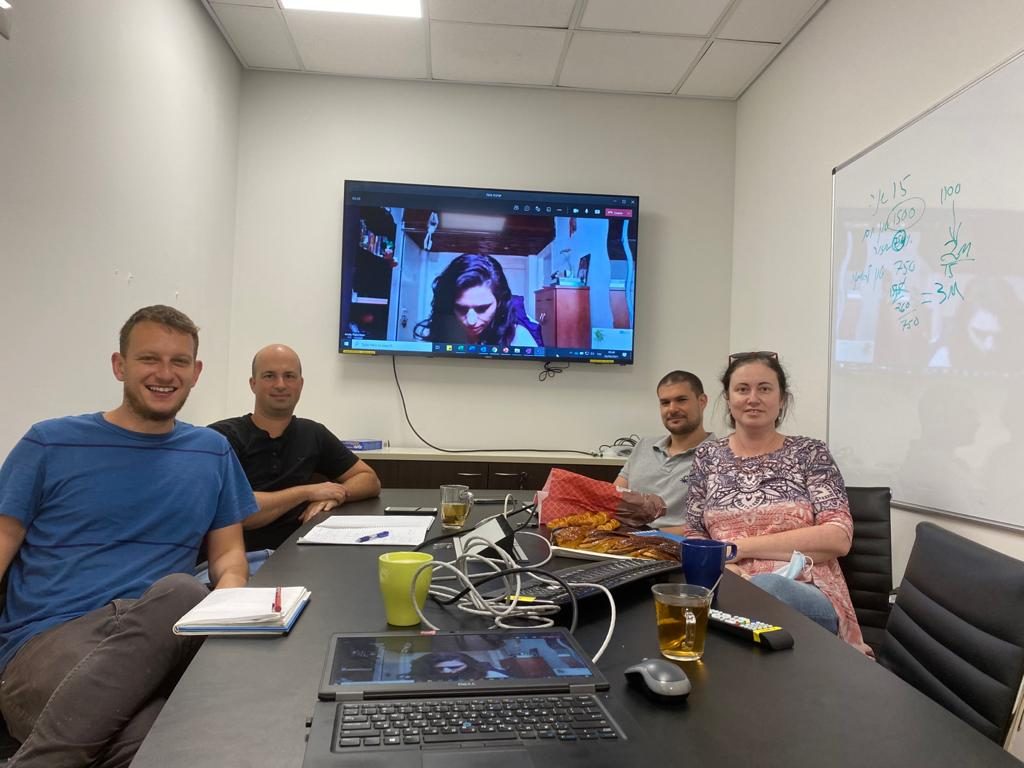By The DHVMED Air Quality Division Team
Israel’s Clean Air Act was enacted in 2008, marking the first time that the regulation of various sources of air pollutant emissions was incorporated within the framework of a single law.
The law was initially promoted by the Adam Teva V’Din, a nonprofit public association, and was formulated by several members of the Israeli parliament, the Knesset, in cooperation with the association and other environmental bodies. The law was first proposed in the Knesset in 2005 and was approved three years later, in July 2008, without opposition. In accordance with Article 93 of the law, it entered into force on January 1, 2011.

The Clean Air Act has brought a significant change in the way by which the Ministry of Environmental Protection and other governmental ministries handle sources of pollutant emissions. The process of issuing emission permits in Israel is based primarily on European Industrial Emissions Directive 2010/75 (the IED Directive) for regulating industrial plants, which was promulgated in November 2010. The IED Directive consolidates requirements specified in the IPPC Directive, the Large Combustion Plant Directives, the VOC Solvents Emissions Directive and others.
DHVMED began its work by assisting in the regulation of chemical plants located in the Neot Hovav Industrial Zone located about 10 km south of the city of Beer Sheva. The main factors that led to the regulation of these plants were the excess chemical emissions and severe odour nuisances suffered by the residents of Beer Sheva due to the operation of the plants and their industrial wastewater evaporation ponds. At the same time, construction of a principal military base was being planned at a distance of about 9 km downwind of the industrial zone, which would have endangered the health of those serving at the military base.
Construction of the military base was the most significant trigger in initiating the handling of these plants. The process of regulating industrial plants received a strong push following the success in handling the Neot Hovav chemical plants, after which a campaign began to regulate other significant sources of emissions such as those from cement plants and quarries.
“DHVMED has been providing consulting services in the regulation of industrial plants for the Ministry of Environmental Protection since 2004″
Upon enactment of the Clean Air Act in 2011, a process of regulating all industry in Israel began based on the IPPC directive and later on, based on the IED directive. The law set a transitional period of 4 years during which approximately 180 of the most significant plants from the standpoint of air emissions were granted an air emissions permit. In order to monitor the contribution of the plants to air pollution measured at the various monitoring stations operated by the Ministry of Environmental Protection and by municipal environmental units, the Ministry, with the assistance of DHVMED, manages an inventory of pollutants emitted into the air. This geographic registry is managed at both the point level (such as by stack, tank, stockpile, etc.) as well as at the general level (Israel’s fleet of vehicles). The method of calculation used for this registry, which was developed by DHVMED and based on methodologies commonly used in Europe and globally, is adapted to information from each source of emissions where a compatible bottom-up or up to bottom approach is used for each source and each sector. The evaluation of trends and their integration together with analysis of the findings from monitoring and environmental sampling assist in the decision-making process and in determining regulatory policies at the plant, sector, industrial area and national levels.
The process of issuing emissions permits to the largest industrial plants as required by the Clean Air Act was completed by the Ministry in September 2016.
Since 2016, DHVMED has continued to assist the Ministry in renewing emissions permits, while reviewing policy documents, procedures and professional guides. DHVMED has assisted in the process of revising most of the principal documents, among them stack monitoring and sampling procedures, environmental monitoring and sampling policies and an environmental sampling procedure, a procedure for monitoring emissions from equipment components (LDAR), fenceline monitoring, guidelines for submitting annual reports that the plants must provide and management of a system for monitoring stack samples.
In 2018, 10 years after enactment of the Clean Air Act and approximately18 months after completion of the process of issuance of emissions permits to the plants, the Ministry of Environmental Protection issued an economic analysis of the benefits that accrued to the economy and the environment from implementation of the law, which were expressed in savings of NIS 115 billion in contrast with an investment of NIS 38 billion. As such, for every NIS 1 invested in reducing emissions, the economy gained NIS 3. The report was prepared by DHVMED through a team that included air quality experts, industrialists and economists. The team collected cost data from industrial plants, the Israel Electric Corporation, engineering firms specializing in facilities that reduce the emission of pollutants into the environment and others while taking into consideration the externalized cost effects of the most common pollutants.
“Over the last several years, we have witnessed a significant reduction in the emission of pollutants into the environment”
A team of air quality and GIS specialists at DHVMED recently performed an air quality analysis for the Sharon Carmel Municipal Environmental Association. The largest power plant in Israel – the Rabin Lights Power Station – is located in the association’s jurisdiction. This station operates six coal-fired production units. Devices to reduce sulfur oxides (FGD), nitrogen oxides (SCR) and particulates (ES) have been installed on two of the units in the last few years. Devices have not been installed on the other four units, which are planned to cease operation in 2022. In the framework of this project, we divided the association area into zones with similar climatic and topographic characteristics and ran the AERMOD pollutant dispersal model for each separate tract. In order to obtain a picture of existing conditions for the entire association area, we consolidated the results of the model using ARCGIS software. This data was analyzed using the software’s spatial analysis tool and thereafter underwent spatial dispersal using an inverse distance weighted (IDW) method.
So, what about the future? As part of the requirements of the Air Quality Act, the environmental values of various pollutants specified in the law are examined once every 5 years.

DHVMED has become a leader in the field of air quality regulatory consulting for various bodies. It now sees the issue of air quality from a 360° perspective that includes recognition of the sources of emissions and manner of their operation that contributes to the formation of pollutants, quantitative assessment of emissions, the adaptation of technologies and special methods for preventing and mitigating emissions, supervision over compliance of sources of pollution with mitigation objectives determined for them and in the implementation of mitigation plans, examining the impact of implementation plans on other mediums and economic assessments from the cost-benefit standpoint of the feasibility of reducing pollutant emissions.
We foresee that the health consequences resulting from exposure to high levels of air pollution will take a significantly larger place in public discourse in the coming years. We also foresee that the focus in the long-term will not only be at the environmental level but will rather also be on the level of the individual through “personal exposure monitoring” to air pollution. Insofar as the level of commuting by the public has increased and people are exposed to various levels of pollution in the daily environment (such as at the office, in vehicles, trains, at home, etc.), the goal will be to study low-level exposure of individuals to air pollution according to lifestyle.
In order to study this, DHVMED is currently working on the development of less expensive and simpler monitoring systems that will make it possible to obtain a qualitative picture of air quality in various places, to obtain alerts when there is an increase or change in pollutants levels in the environment with respect to local standards and also provide air quality index (AQI) values. The system includes devices for monitoring air pollutants, meteorological parameters and software that processes the data and provides an up-to-date picture of conditions. In addition, the software will enable each subscriber to receive warnings and information regarding high air pollution values and recommendations to reduce their personal exposure. Moreover, the system has a dashboard that makes it possible for decision-makers to receive a regular situation report on air quality conditions. The aim of the system is to provide a readily available and accessible service to the public and decision-makers regarding air quality conditions and to take ad hoc decisions when a warning of a problem is received.

The author is the Manager of the Air Quality Division at DHVMED. The division provides consulting services in a variety of air quality fields, among them environmental regulation compliance by industrial plants and power plants, calculation and development of an emissions registry, performance of surveys of air quality from transportation sources, environmental impact statements, analysis of air pollutant dispersal through sophisticated physical models, cost-benefit analyses, epidemiological analysis and odour surveys. For further information: [email protected]